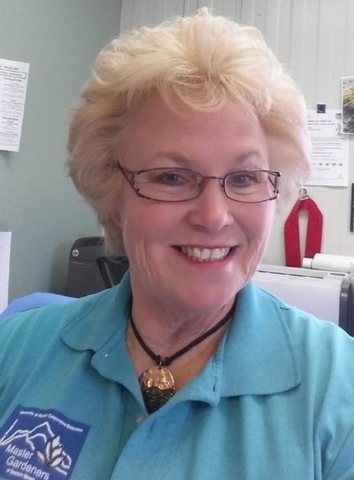
Local resident and master gardener Debby Woodland knows a thing or about gardening.
In fact, her expertise will be on display this Saturday when she takes to the lectern at Pahrump Historical Museum as part of the ongoing lecture series.
Since 2004, Woodland has worked as a master gardener at the University of Nevada Cooperative Extension facility in Pahrump.
Her topic, “Will anything grow in Pahrump?” will cover the spectrum of gardening, planting, watering and soils, which she says can challenge some of the most experienced gardeners in the valley.
Woodland’s lecture begins at 1 p.m. at Pahrump Valley Museum and Historical Society at 401 E. Basin Road.
She noted that under the right conditions, residents can grow just about anything under the sun, a fact that many folks were not aware of in the Mojave Desert.
“I really want to talk about the soils, because soil is key here,” she said. “We’re going to also talk about amendments to your soil, meaning what to add to your soil, water holding capacity and how to increase it.”
Woodland said with the proper amendments and as along as a plant can survive, the extreme temperatures, especially cold weather, just about anything will grow in the Pahrump Valley.
For the novice gardener, Woodland recommended starting out with plants that are drought tolerant.
“For the first time gardener, I would recommend plants that are more closely associated with our desert soils here,” she said. “So many people come from back east or up north where they try to grow plants that require different soil Ph and temperatures.”
Another problem associated with gardening in Pahrump is the actual depth of soil, which Woodland said is quite shallow throughout the community.
“Depending on where you live in the valley here, roots really don’t go that deep,” she said. “We have silty, clay soils and the plants need oxygen and the roots need oxygen, so the roots grow out. Once that plant hits that edge, you will have a problem called girdling and you will lose that plant.”
Girdling, she noted, occurs when the roots of a plant or tree wrap themselves around the base of itself.
“The roots will go in circles and that plant or tree will eventually die,” she said. “You want to be able to help the plant integrate its roots into our native soil.”
The facility Woodland works out of contains a botanical garden where numerous varieties of plant species have laid down roots and are thriving.
Woodland said many of the plants in the garden are drought resistant, but not all.
“Some plants, over the course of the years, we had to remove,” she said. “We only have a one acre plot, so it’s very limited.”
Woodland also noted that the quality of soils in the valley differ depending on where one lives.
“It also depends on what you want to grow,” she said. “Up on the alluvial fan, you have very rocky well-drained soil and if you want to plant cacti and yucca it’s great. If you want to plant cactus down in the valley here in the silty, clay soils you have to plant them in rock because they don’t like their feet wet and our soil holds moisture.”
Percolation, Woodland said, is another problem gardeners face living in Pahrump.
“Water goes sideways on silty, clay soil and in sandy areas, the water goes straight down,” she said. “If you are trying to water plant materials up on the alluvial fan, east of Highway 160, you need to incorporate a lot of organics in your soil to capture that moisture.”
The 1-acre botanical garden is located at the University of Nevada Cooperative Extension office, 1651 E. Calvada Blvd. at the corner of Dandelion Road.